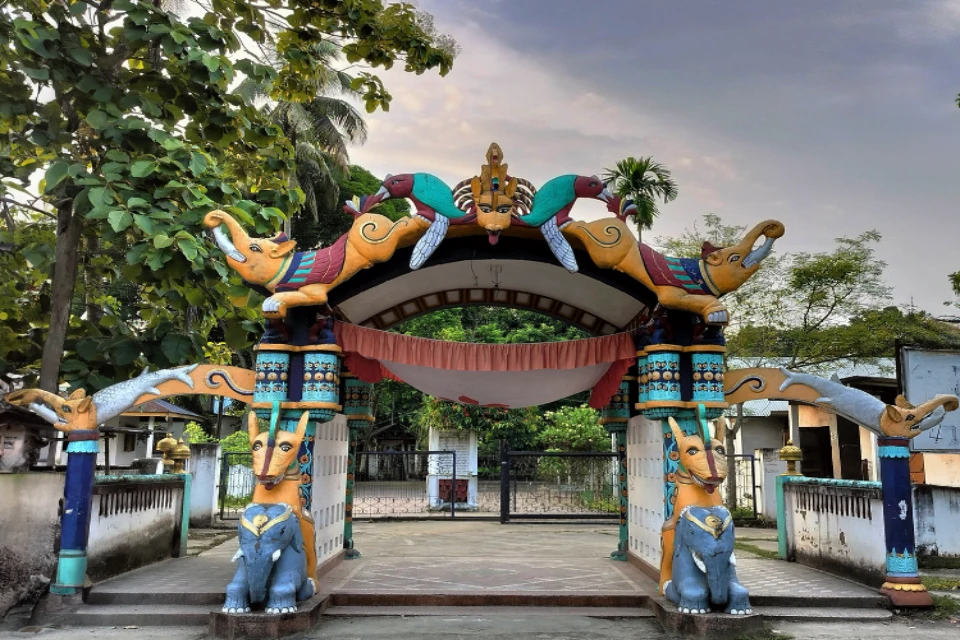
Published On :
Films are a creative representation of untold tales of people and places. Assamese cinema has always been a source of pride and honor for the people of Assam. It has experienced many highs and lows over the past few years. Nonetheless, people hold dear the numerous achievements it has gained along with the beautiful representation of the state.
Let’s go behind the lens and dig into the journey of Assamese cinema from scratch.
A glorious history of Assamese Cinema
The Assamese film industry, fondly known as Jollywood, takes its name from the iconic Jyoti Chitraban Film Studio. The rich history of Assamese cinema dates back to 1935 with the release of “Joymoti”, produced and directed by the noted Assamese poet, author, and filmmaker Roopkonwar Jyoti Prasad Agarwala.
It was based on the play by Lakshimath Bezbaruah and starred Aideu Handique and Phani Sharma. It was premiered at Raunka Hall in Kolkata. This landmark film not only introduced Assamese cinema but also marked the emergence of a vibrant new art form in the state.

That was the beginning of a remarkable era in the history of art, literature, and culture in Assam, where renowned filmmakers have produced works of finest art that have won awards at the national level. Though often overshadowed by larger film industries, Assamese cinema boasts a rich legacy that began in the early 20th century. While the Indian film industry made its debut in 1913 with Raja Harishchandra by Dadasaheb Phalke, Assam was not far behind.
Since 1935, the golden age has been signified by the release of remarkable masterpieces like Jyoti Prasad Agarwala’s “Indramalati”, “Monumoti” by Rohini Kumar Baruah, “Badan Barphukan” by Kamal Narayan Choudhury, “Siraj” by Phani Sharma and Bishnu Prashad Rabha, “Runumi” by Siraj Goswami, and several others.
In the 1950s, the Phani Sharma-directed film “PiyoliPhukan” won the National Award for best regional language film. Also, set the benchmark for other directors to showcase their brilliance. ‘Era Bator Sur’, directed by Dr. Bhupen Hazarika crafted a new age for Assamese cinema. His musical “Shakuntala” in 1961 won the President’s Silver Medal.
“Puberun” by Prabhat Mukherjee was screened at the Berlin Film Festival and gained international recognition for the first time. The 1988 release, “Halodhia Choraye Baodhan Khai” directed by Jahnu Barua, became the first Assamese movie to win the National Award for Best Feature Film and multiple awards at the Locarno International Film Festival.
The DVD/VCD era
The early 2000s marked the age of DVDs and VCDs. The people of Assam, especially the youth, went bouncing off the walls over the newly released musical drama “Junbai,” directed by Rajesh Bhuyan. The gorgeous Gayatri Mahanta as Junali won many hearts along with Nayan Nilim, and the melodies of Zubeen Garg made it a hit.
Rajesh Bhuyan, with his other blockbuster series “Janmoni,” starring Jatin Bora, Shyamontika Sharma, and Utpal Das, succeeded in impressing the audience. The Bihu songs from the movie were very popular, and they gradually became the talk of the town.
The unsettling collapse
In a state that has always taken cinema seriously, Assamese cinema has never really managed to break through on the national stage, despite its lengthy history and aesthetic accomplishments. However, throughout the years, the state’s film industry has made a name for itself at the National Awards.
Even though Assamese films in the mold of Bollywood were released at the beginning of the twenty-first century, the industry has been unable to compete in the market and has been greatly out shadowed by larger industries such as Bollywood and despite its promising start, the Assamese film industry faced a significant downturn in the following decades.
One of the key reasons for its downfall is the audience’s changing interest. The prominent themes of Assamese cinema have always been social dogmas, turmoil, village life, historical plays, or musicals. It was focused on the drama genre, showcasing the emotions of Assamese people.
But with changing times and modernization, people started searching for more relatable and exciting themes like romance, thrillers, and action. It was a challenge for the Assamese film industry to meet the expectations of the young audience while not losing its true essence.
Moreover, the decline was marked by dwindling productions and an inability to keep pace with other regional film industries. The reasons were manifold, such as limited financial investment, outdated technology, lack of mass-level publicity, and minimal awareness among the audience.
The bounce back
The challenge was accepted, molded, and presented in a successful way. The Assamese cinema made its comeback with flying colors. They were successful in including every component that the public had anticipated in a number of captivating blockbusters. Furthermore, it served as a global representative of Assam with its coming-of-age dramas.
The 2010s can be marked as the reincarnation of the industry. Technological advancements and the adoption of modern filmmaking techniques breathed new life into the industry. Directors started improving screenplay quality, enhancing dialogue delivery, and focusing on audience demands. Many independent movies shined globally with national and international awards.
Rima Das, with her two beautiful compositions, “Village Rockstars” and “Bulbul Can Sing,” succeeded in collecting global recognition and many awards. The turning point came with the release of Village Rockstars in 2017.
The film, which beautifully portrayed the aspirations of a young village girl dreaming of becoming a rockstar, not only resonated with audiences but also won the National Award for Best Feature Film, the second Assamese movie after Halodhia Choraye Baodhan Khai to win this award. This achievement put Assamese cinema on the global map, earning it critical acclaim and attention worldwide.
Other critically acclaimed fresh dramas that left the footprints of Assamese cinema all over the world are “Anur” by Monjul Baruah, the haunting thrillers “Aamis” and “Kothanodi” by Bhaskar Hazarika, “Maj rati keteki” by Santwana Bordoloi, and “Baandhon ‘by Jahnu Barua.
Also read: Kothanodi: An Incredible Visualisation of Assam’s Folklore
The Golden Period
The revival was further solidified by commercially successful films like Kanchanjangha, Ratnakar, Mission China, Sri Raghupati, and Bidurbhai. They even collected over ₹2 crore at the box office. These movies not only captivated the local audience but also showcased the potential of Assamese cinema to compete on a pan-India level.
As per experts, this era is considered the Golden Period of Jollywood. With stories that struck a chord with viewers, advanced production quality, and increasing investments, the industry began to flourish.
| Rank | Film | Year | Director | Worldwide gross |
| 1 | Sri Raghupati | 2023 | Suvrat Kakoti | ₹13.81 crore (US$1.7 million) |
| 2 | Ratnakar | 2019 | Jatin Bora | ₹9.25 crore (US$1.2 million) |
| 3 | Kanchanjangha | 2019 | Zubeen Garg | ₹7 crore (US$880,000) |
| 4 | Dr. Bezbaruah 2 | 2023 | Nipon Goswami | ₹6.91 crore (US$870,000) |
| 5 | Mission China | 2017 | Zubeen Garg | ₹6 crore (US$750,000) |
Endnotes
This revival of Assamese cinema has done more than just entertain—it has awakened a cultural renaissance. The younger generation is now more aware of their rich cinematic heritage, and many are considering careers in film, which was previously unthinkable. The growth of Assamese cinema has also contributed to addressing unemployment, with the film industry creating job opportunities for actors, technicians, and other professionals.
The journey of Assamese cinema—from its glorious beginnings with Joymoti to its struggles and eventual resurgence—is a testament to the resilience of Assamese culture. The Assamese film industry has blossomed once again, not just as a medium of storytelling but as a beacon of cultural pride and inspiration. With a growing global audience and increasing recognition, the future of Jollywood looks brighter than ever.
References
Lakshmi B. Ghosh, “A rare peep into world of Assamese cinema”, The Hindu, 2006



